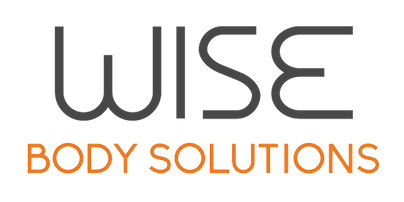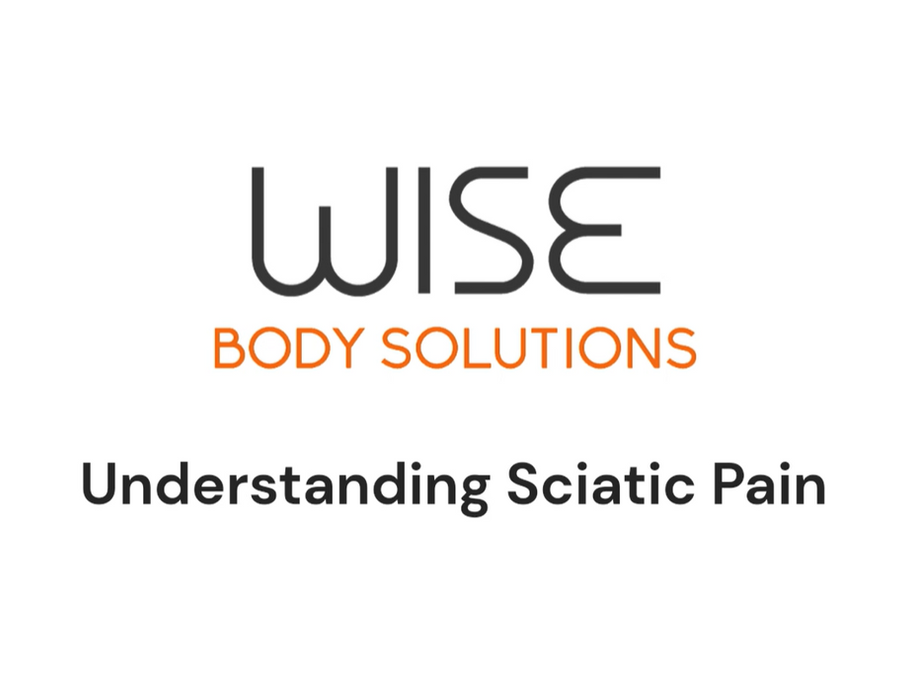Sciatic pain can be debilitating, affecting daily activities and causing discomfort and frustration. While there are various treatments and remedies available, one lesser-known approach that has been gaining popularity in recent years is Rolfing® Structural Integration. This technique is based on the belief that the body’s structure can be realigned and balanced through skillful touch. This educated form of bodywork influences the supple connective tissue called fascia that surrounds and supports muscles and organs. By working with a skilled Rolfer, clients can experience not only relief from sciatic pain, but also improved posture, flexibility, and overall well-being. In this article, we’ll explore how Rolfing Structural Integration works and why it may be an effective solution for those suffering from sciatic pain.
Understanding Sciatic Pain
Sciatic pain is a type of pain that is caused by irritation or compression of the sciatic nerve. This nerve runs from the base of the lower back down to the legs and feet. Sciatica describes various symptoms within the leg like burning, cramping, weakness, numbness, or tingling. The pain is usually felt only on one side of the body and can be accompanied by lower back pain, or just felt in the leg. Discomfort from an irritated sciatic nerve can range from a mild ache to a sharp, shooting pain. These symptoms can be intermittent, or persistent.
Causes of Sciatic Pain
Sciatic pain can be caused by a variety of factors, including:
Herniated Discs
Herniated discs occur when the soft tissue inside the spinal disc protrudes through the outer layer of the disc. This can cause pressure on the sciatic nerve, leading to pain, discomfort, numbness tingling, and weakness.
Spinal Stenosis
Spinal stenosis is a condition in which the spinal canal narrows, putting pressure on the nerves that pass through it. This can cause sciatic pain, as well as other symptoms such as numbness and tingling in the legs.
Piriformis Syndrome
Piriformis syndrome is a condition in which the piriformis muscle, which runs from the lower back to the hip, becomes tight or inflamed. This can put pressure on the sciatic nerve, causing pain and discomfort.
Degenerative Disc Disease
Degenerative disc disease (which isn’t really a disease but a condition) is when the spinal discs naturally degenerate over time, causing them to lose their cushioning ability. This can lead to pressure on the sciatic nerve, causing pain and discomfort.
What is Rolfing Structural Integration?
Rolfing Structural Integration is a form of bodywork that was developed by Dr. Ida Rolf in the 1950s. The technique was based on the belief that the body’s structure can be realigned and balanced through manipulation of the fascia, the connective tissue that surrounds and supports muscles and organs. Through updated science, Rolfing is now known to impact pain signals, perception, and muscle and fascia tension. Rolfing Structural Integration is designed to improve posture, balance, and flexibility, as well as to alleviate chronic pain and stress.
The goal of Rolfing Structural Integration is to create a more efficient and balanced body. A Rolfer uses a series of manual, hands-on techniques to manipulate the body helping to encourage deep tissue release. Sessions can involve sustained pressure, manual manipulation of tissue, stretching, awareness building, and movement education.
The Rolfing Structural Integration Process
The Rolfing Structural Integration process typically involves a series of 10 sessions, each lasting approximately 60-90 minutes. Sessions are scheduled for every one-two weeks. The sessions are designed to address different areas of the body, with each session building on the previous one.
During a Rolfing session, the client may be asked to stand, sit, or move in different ways to help the Rolfer assess their posture and movement patterns. The Rolfer will then use manual techniques to manipulate the body and helping to ease tissue tension and restrictions. Homework may be given to aid the release process and promote healthier movement patterns.
Add How Rolfing Structural Integration Can Help Alleviate Sciatic Pain
Rolfing Structural Integration can be an effective solution for those suffering from sciatic pain. By easing physical restrictions in connective tissue and muscles Rolfing Structural Integration can help to alleviate pressure on the sciatic nerve, reducing pain and discomfort. By increasing awareness of posture and behavior, one can discover what positions and movements create irritation within the muscles and joints around the sciatic nerve, allowing them to alter behavior and prevent the return of sciatic pain. Rolfing can also help to improve posture, balance, and flexibility, which can also help to prevent future episodes of sciatic pain. By realigning the body’s structure, Rolfing Structural Integration can create a more efficient and balanced body, reducing the likelihood of injury or strain.
What to Expect During a Rolfing Session
During a Rolfing session, the client can expect to be asked to stand, sit, or move in different ways to help the Rolfer assess posture, tension, and movement patterns. Rolfers examine and watch the body move to observe global and local alterations in the body’s mechanics due to pain, previous injuries, and compensation patterns. The practitioner will then formulate a session that provides improved mechanics both at the pain site and anywhere that influences how that area moves. They will use manual, hands-on techniques to manipulate the tissue helping to realign the body’s structure. During some parts of the session, the Rolfer may have the client move a body part or participate with mindfulness. The contact in the session feels like a stretch or compression and is deeply satisfying. Occasionally tenderness is associated with treatment near painful areas but always within the client’s comfort level.
Clients should wear comfortable, loose-fitting clothing to their Rolfing sessions. Many clients wear full-coverage underwear, swimsuits or exercise clothing that allows them to move without restrictions. Participants should also be prepared to communicate with the Rolfer, providing feedback on their level of comfort and pain during the session.
Benefits of Rolfing Structural Integration for Sciatic Pain
There are numerous benefits of Rolfing Structural Integration for sciatic pain, including:
Pain Relief
By releasing restrictions in the muscles and fascia Rolfing Structural Integration can help to alleviate pressure on the sciatic nerve, reducing pain and discomfort.
Improved Posture
Rolfing Structural Integration can help to improve posture by increasing awareness of body positioning. This can reduce strain on the muscles and joints, preventing future episodes of sciatic pain.
Increased Flexibility
Rolfing Structural Integration can help to increase flexibility by releasing tension in the muscles and fascia. This can improve range of motion and reduce the likelihood of injury or strain.
Enhanced Well-Being
Rolfing Structural Integration can help to enhance overall well-being by reducing stress and tension in the body. This can improve sleep, reduce anxiety and depression, and promote a sense of calm and relaxation.
Success Stories of Rolfing Structural Integration for Sciatic Pain
Many people have found relief from sciatic pain through Rolfing Structural Integration. Here are a few success stories:
John’s Story
John had been suffering from sciatic pain for years and had tried numerous treatments without success. After just a few sessions of Rolfing Structural Integration, he noticed a significant reduction in his pain and an improvement in his posture and flexibility.
Sarah’s Story
Sarah had been experiencing sciatic pain during her pregnancy and was unable to find relief through other forms of treatment. After a series of Rolfing sessions, she was able to move more freely and experienced a significant reduction in her pain.
Tom’s Story
Tom had been experiencing chronic sciatic pain for years and had become resigned to living with it. After a series of Rolfing sessions, he was amazed at the improvement in his pain and mobility. He now recommends Rolfing Structural Integration to anyone suffering from sciatic pain.
Frequently Asked Questions About Rolfing Structural Integration and Sciatic Pain Relief
Is Rolfing Structural Integration Painful?
Rolfing Structural Integration can be uncomfortable at times, as the Rolfer manipulates areas of tension and restriction. However, the discomfort should be manageable and should not be painful.
How many sessions of Rolfing Structural Integration are needed for sciatic pain relief?
The number of sessions needed will vary depending on the individual and the severity of their sciatic pain. However, most people find relief after a series of 10 sessions.
Is Rolfing Structural Integration covered by insurance?
Rolfing Structural Integration is not typically covered by insurance. HSA and FSA are payment options (though may require a doctor’s note, or prior approval). We can also provide receipts for self-submission to health insurance companies, complete with appropriate billing codes.
Conclusion
Sciatic pain can be a frustrating and debilitating condition, but it doesn’t have to be. Rolfing Structural Integration is a highly effective technique that can help to alleviate sciatic pain and improve overall well-being. By releasing soft tissue restrictions, and improving awareness and posture Rolfing Structural Integration can create a more efficient and balanced body, reducing the likelihood of injury or strain. If you’re suffering from sciatic pain, consider giving Rolfing Structural Integration a try. It could be just the solution you’ve been looking for.

